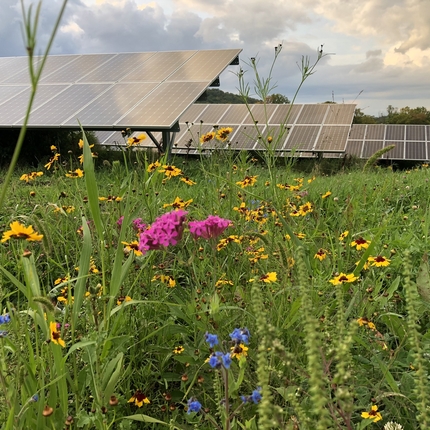By Lindsay Mouw, former staff member
Nearly every Nebraskan is now served by an electric utility committed to supplying clean, sustainable energy.
In December, the Nebraska Public Power District (NPPD) board of directors voted 9-2 to adopt a goal to achieve net-zero carbon emissions by 2050.
This means the utility will steadily seek to source more energy from such carbon-free sources as solar and wind energy and reduce reliance on such carbon-intensive sources as coal over the next 30 years. During this time, NPPD will continue to use reliable generation sources, such as natural gas and nuclear, until alternatives are developed at scale. These efforts will be combined with energy efficiency projects, certified offsets, beneficial electrification projects, and other economic or practical technologies.
With the adoption of this policy, NPPD joins Lincoln Electric System (LES) and the Omaha Public Power District (OPPD) in what has become a statewide effort to reduce carbon emissions for a decarbonized electric grid. OPPD adopted its net-zero by 2050 goal in 2019 and LES aims to reach net-zero by 2040 as part of a goal adopted in 2020.
This is a big win for Nebraska and its rural residents and communities.
Clean energy brings additional tax dollars to counties that support local schools, infrastructure, and public services. It also brings jobs, increased retail sales, and secure payments to area landowners, in addition to providing sustainable, homegrown energy. Many rural Nebraskans have already experienced these benefits and want to bring additional investments to their communities.
With the state’s unique public power system, Nebraskans have the power to influence how their energy is generated. NPPD’s rural customer/owners are to be commended for the part they played in the adoption of this goal.
Because of their efforts, and the work of others, Nebraska has established itself as a clean energy leader on the road to providing affordable, reliable, and sustainable clean energy across the state.





